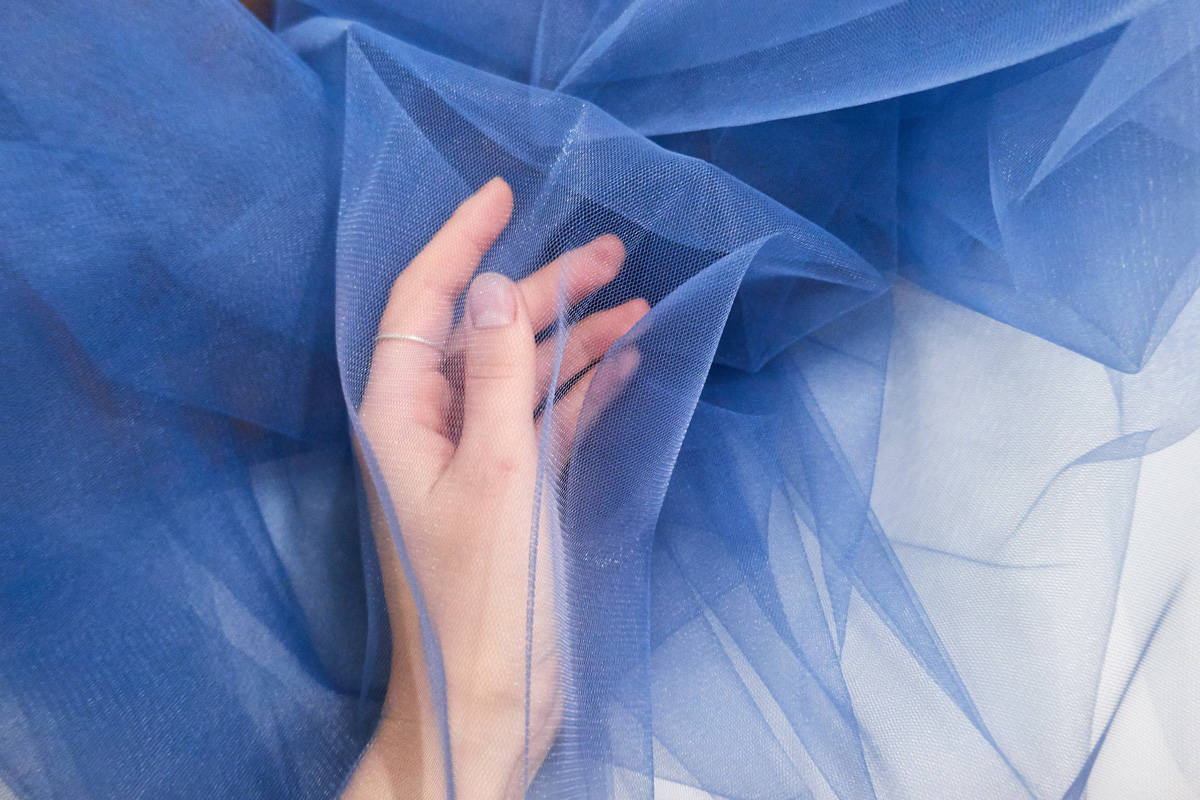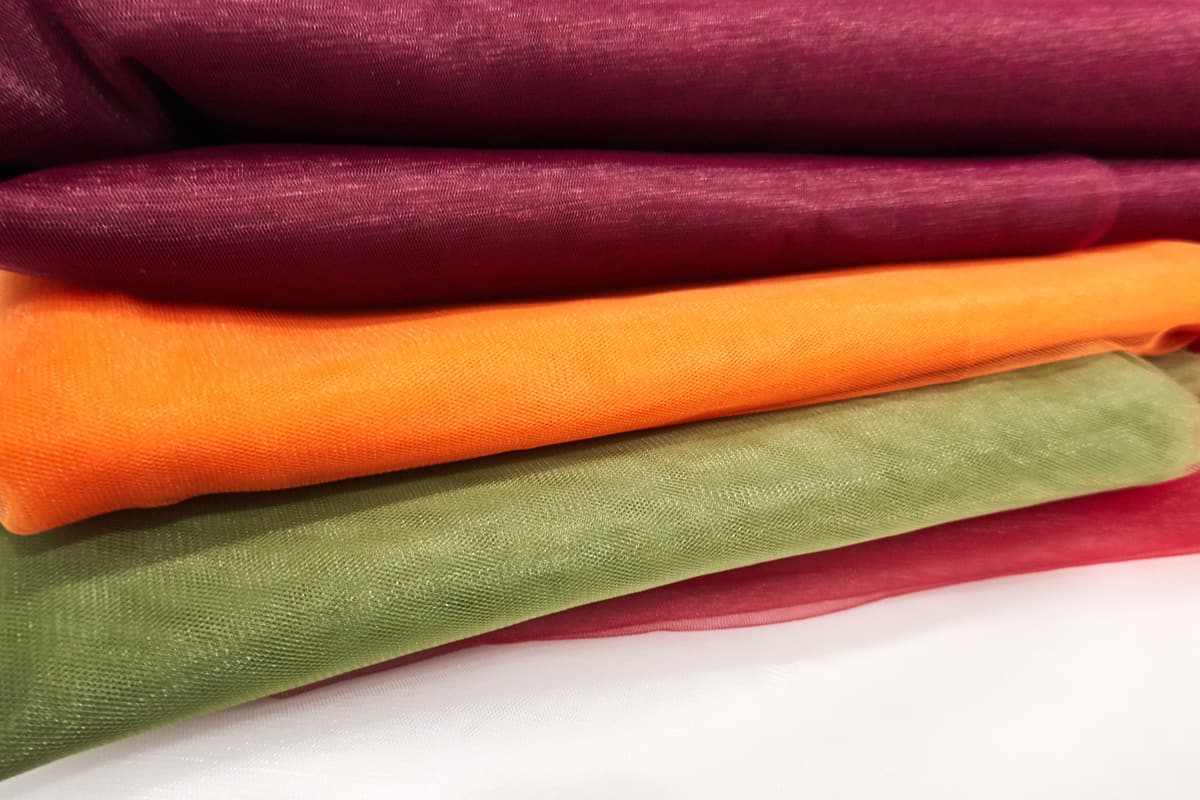Tulle is a lightweight netting fabric commonly used in bridal veils, dresses, and other decorative items. Wondering if it can be used as garden netting? Well, you've come to the right place because we have conducted research on this topic and will share our findings with you.
Yes, you can use tulle for garden netting, but it may not be the most effective option because of the following reasons:
- Typically not designed to withstand outdoor weather conditions.
- Not strong enough to support heavier plants or crops.
- May not be effective at keeping out all types of pests and animals.
- May not be cost-effective for larger garden projects.
In this discussion, we will explore whether tulle can be used for garden netting and the detail of these factors above that should be considered when using it in this way. More information ahead so keep on reading.

Can You Use Tulle For Garden Netting?

Tulle is made from a variety of materials, including silk, nylon, and polyester, and it comes in a wide range of colors and textures. While tulle is primarily used for fashion purposes, some people have wondered whether it can also be used as a netting material for gardens.
Firstly, it's important to understand what garden netting is and what its purpose is. Garden netting is a type of mesh material that is used to protect plants and crops from pests, birds, and other animals. It can also be used to support climbing plants or to create trellises.
Garden netting can be made from a variety of materials, including plastic, nylon, and wire mesh. The choice of material depends on the type of garden, the type of plants being grown, and the specific needs of the gardener.
When it comes to using tulle as a garden netting material, there are several factors to consider and these are:
Typically Not Designed To Withstand Outdoor Weather Conditions
While it may be fine for indoor decorations, it is not recommended for prolonged outdoor use. This is because tulle is not waterproof and can easily become damaged by rain, wind, and other environmental factors.
If you choose to use tulle as a garden netting material, you will need to ensure that it is properly protected from the elements to prevent damage.
Not Strong Enough To Support Heavier Plants Or Crops
Unlike traditional garden netting materials, tulle is not designed to be load-bearing. It may be fine for lightweight plants, such as flowers and herbs, but it may not be able to support heavier plants or crops, such as tomatoes or squash.
If you are using tulle as a garden netting material, it is important to ensure that it is properly secured to prevent it from collapsing under the weight of your plants.
May Not Be Effective At Keeping Out All Types Of Pests And Animals
While it may be able to keep out smaller insects, such as aphids, it may not be effective at keeping out larger pests, such as birds, rabbits, and squirrels. This is because tulle is a lightweight material and can be easily torn or punctured.
If you are using tulle as a garden netting material, you will need to ensure that it is properly secured and that any gaps or tears are repaired as soon as possible.
May Not Be Cost-Effective For Larger Garden Projects
While tulle is relatively inexpensive when used for small decorations, it may not be the most cost-effective option for larger garden projects.
This is because tulle is typically sold in small amounts, and you may need to purchase several rolls to cover a large garden area. Additionally, if you need to replace the tulle frequently due to damage or wear and tear, the costs can quickly add up.
What Are The Benefits Of Using Tulle For Garden Netting?
Aside from the drawbacks mentioned above, there are also some benefits of using tulle as garden netting and these are:
Protection From Pests
One of the primary benefits of using tulle for garden netting is that it provides protection from pests. Tulle has a fine mesh that prevents insects and other pests from getting to your plants.
Improved Airflow And Light Penetration
Another benefit of using tulle for garden netting is that it allows for improved airflow and light penetration. Tulle is a lightweight and breathable material that allows air to circulate around your plants.
This helps to prevent the buildup of moisture that can lead to fungal and bacterial diseases. Additionally, the fine mesh of the tulle allows sunlight to pass through, which is essential for plant growth.
Easy To Install
Tulle is also easy to install, making it an ideal choice for garden netting. It can be cut to size with scissors and attached to stakes or other support structures. Also, tulle is lightweight and easy to move, so you can easily adjust your netting as your plants grow.
Cost-effective
Tulle is a relatively inexpensive material that can be purchased in bulk. This makes it an affordable option for gardeners who want to protect their crops without spending a lot of money.
Versatile
Tulle is a versatile material that can be used for a variety of garden netting applications. It can be used to cover individual plants, entire garden beds, and even fruit trees.
Moreover, tulle comes in a range of colors, so you can choose a color that complements your garden and adds to its aesthetic appeal.

How To Install Tulle As Garden Netting?
Installing tulle as garden netting is a simple process. If you insist on using tulle as garden netting then follow the steps of the installation below:
1. Measure The Garden Bed
Using a measuring tape, measure the length and width of the garden bed that needs to be covered with tulle. Add a few extra inches to each measurement to ensure that the tulle will completely cover the bed and have enough material to be secured to the stakes.
Click here to see this tulle on Amazon.
Click here to see this measuring tape on Amazon.
2. Cut The Tulle Fabric
Using the measurements taken in step 1, cut the tulle fabric to the appropriate size. Be sure to cut enough fabric to cover the entire garden bed and have enough material to be secured to the stakes. It's best to cut the tulle into manageable-sized pieces to make it easier to work with.
3. Install Garden Stakes Or Poles
Install garden stakes or poles around the perimeter of the garden bed. These will serve as support for the tulle netting. Space the stakes or poles approximately 1-2 feet apart and push them into the ground to ensure they are stable.
Click here to see these garden stakes on Amazon.
4. Attach The Tulle To The Stakes
Attach the tulle to the garden stakes or poles using zip ties or twine. Start at one corner of the garden bed and secure the tulle to the stake or pole. Continue attaching the tulle to the stakes or poles along the entire perimeter of the garden bed, pulling the tulle taut as you go.
Click here to see this roll of twine on Amazon.
5. Secure Any Gaps Or Openings
Inspect the tulle netting to make sure there are no gaps or openings. If any gaps or openings are present, use zip ties or twine to secure the tulle to the stakes or poles and close the gap.
Click here to see these zip ties on Amazon.
6. Trim Any Excess Tulle
Trim any excess tulle from the netting using scissors. This will help prevent the tulle from getting caught on any nearby plants or objects.
Click here to see these scissors on Amazon.
7. Inspect & Maintain The Tulle Netting
Inspect the tulle netting periodically to ensure that it remains secure and is providing the necessary protection to the garden. If any damage occurs to the tulle, make repairs immediately to prevent pests or other harmful elements from getting through.
To give you a clear visualization of how to install this tulle in your garden then check out the video on YouTube shown below.
How Long Does Tulle Last As Garden Netting?

Tulle garden netting is a popular option for gardeners because it is inexpensive, easy to work with, and can be found in a variety of colors to blend in with the garden. This kind of garden netting usually lasts around 2-3 years. However, the lifespan of tulle as garden netting will depend on several factors such as the following:
Quality Of The Material
The quality of the tulle will have a significant impact on its lifespan as garden netting. Higher-quality tulle is made with more durable materials that are less likely to break or tear.
Cheaper tulle, on the other hand, may be more prone to tearing or breaking, especially if it is exposed to harsh weather conditions or rough handling.
Weather Conditions
Tulle that is exposed to direct sunlight for long periods of time may begin to break down and deteriorate more quickly. Likewise, tulle that is exposed to excessive rain or moisture may also break down or become damaged over time.
It is important to note that tulle is not water-resistant, and therefore may not be the best option for areas with high humidity or frequent rainfall.
Frequency Of Maintenance
Regular cleaning and inspection can help to identify and address any issues with the tulle before they become more serious. In addition, storing the tulle properly during the off-season can also help to extend its lifespan.
Conclusion

In short, tulle is fine for small garden projects, but not for larger netting projects. It requires protection, quick repairs, and secure fixing. For larger projects, use outdoor-specific garden netting that can support plant weight and withstand the elements in the surrounding.
Before you go, check out some of the interesting topics we have below.
Can You Water Through Garden Netting?
Do Birds Get Caught In Garden Netting?






